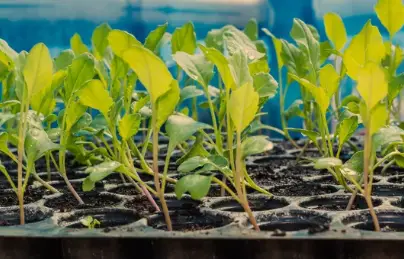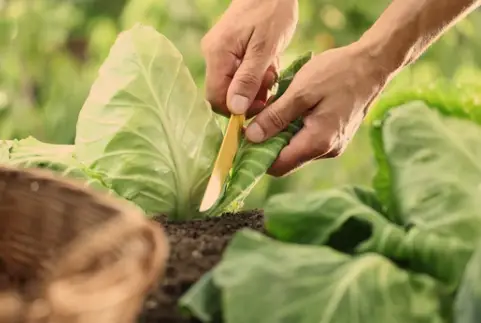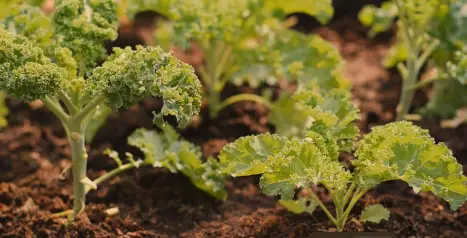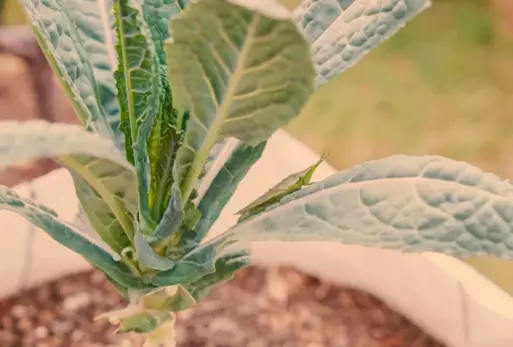Kale, with its numerous health benefits and versatile culinary uses, has gained tremendous popularity in recent years.
Whether you’re a seasoned gardener or a beginner with a green thumb, starting kale seeds indoors can significantly enhance your chances of a successful and abundant harvest.
In this blog post, we will delve into the optimal timing for starting kale seeds indoors, equipping you with the knowledge to kickstart your kale-growing journey.
Kale’s Growth Cycle

To grasp the significance of starting kale seeds indoors, it’s crucial to understand the growth cycle of this leafy green. Kale typically takes around 55 to 75 days from seed germination to maturity, depending on the variety.
This means that providing kale plants with a long enough growing season is essential for achieving optimal yields.
Determining the Last Frost Date
One of the key factors in deciding when to start kale seeds indoors is the last frost date in your region. Frost can damage or kill young kale plants, so it’s important to ensure they are established indoors before exposing them to the outdoor elements.
Determining the last frost date for your specific area is relatively simple and can be done with the help of local gardening resources or online tools. Knowing this date will allow you to calculate the appropriate indoor seed starting time.
Calculating the Indoor Seed Starting Date

For kale seeds, it is generally recommended to start them indoors 6 to 8 weeks before the last frost date. This timeline allows the seedlings to develop sturdy root systems and establish themselves before being transplanted outside.
To calculate your specific indoor seed starting date, simply subtract the desired number of weeks (6 to 8) from the last frost date. This calculation provides you with a precise timeframe to kickstart your kale seeds indoors.
Table: Example Calculation for Indoor Seed Starting Date
Here’s a table summarizing the key information regarding starting kale seeds indoors:
| Topic | Information |
|---|---|
| Last Frost Date | Determined based on your specific region and climate |
| Recommended Indoor Start | 6-8 weeks before the last frost date |
| Indoor Seed Starting Date Calculation | Last frost date – recommended indoor start (e.g., April 15th – 6 weeks = March 4th) |
| Containers | Use containers with good drainage and adequate space for seedling growth |
| Soil Mix | High-quality potting mix or homemade blend with compost, peat moss, and vermiculite |
| Planting Depth | Sow seeds approximately ¼ to ½ inch deep in the soil |
| Light, Temperature, and Humidity | Provide ample light, maintain a temperature range of 60-70°F (15-21°C), and consider humidity domes or covers for moisture retention |
| Watering | Keep soil consistently moist but not waterlogged |
| Fertilizing | Start feeding with a balanced organic fertilizer after the first true leaves appear |
| Airflow | Ensure adequate airflow to prevent damping off |
| Thinning | Remove weaker seedlings, leaving only the healthiest and most robust |
| Pest Control | Monitor for pests and utilize organic Pest Control methods |
| Transplantation Conditions | Choose a sunny or partially shaded location for planting |
| Hardening Off | Gradually expose seedlings to outdoor conditions over 7-10 days |
| Soil Preparation and Spacing | Prepare soil, removing weeds and adding organic matter; space plants 12-18 inches apart |
Last Frost Date:
April 15th Recommended Indoor Start: 6-8 weeks before last frost Indoor Seed Starting Date: April 15th – 6 weeks = March 4th
Preparing for Indoor Seed Starting

Before you start sowing kale seeds indoors, it’s important to gather the necessary supplies and prepare the environment for optimal germination. Here are a few key steps to follow:
Containers:
Select containers that provide adequate drainage and are large enough to accommodate kale seedlings as they grow. Consider using seed trays or individual pots to provide sufficient space for root development.
Soil Mix:
Use a high-quality, well-draining potting mix or create a homemade blend using compost, peat moss, and vermiculite. The soil mix should be loose and airy, promoting healthy root growth.
Planting Depth:
Sow the kale seeds approximately ¼ to ½ inch deep in the soil. Gently press the soil over the seeds to ensure good seed-to-soil contact.
Light, Temperature, and Humidity: Place the containers in a well-lit area, preferably near a south-facing window or under grow lights. Maintain a temperature range of 60-70°F (15-21°C) for optimal germination. Consider using a humidity dome or covering the containers with plastic wrap to retain moisture.
Nurturing Kale Seedlings

Once your kale seeds have germinated, it’s crucial to provide the right care to help them thrive. Here are some essential tips for nurturing kale seedlings:
Watering:
Keep the soil consistently moist but not waterlogged. Avoid overwatering, as it can lead to root rot. Water from the bottom or use a gentle misting method to prevent disturbing the delicate seedlings.
Fertilizing:
Once the seedlings have developed their first true leaves, begin feeding them with a balanced organic fertilizer. Follow the package instructions for proper dosage and application frequency.
Airflow:
Adequate airflow is crucial to prevent damping off, a fungal disease that affects seedlings. Use a small fan or gently brush your hand over the seedlings daily to promote air circulation.
Thinning:
As the seedlings grow, thin them out to provide enough space for each plant to thrive. Remove the weaker seedlings, leaving only the healthiest and most robust ones.
Pest Control:
Keep a close eye on your kale seedlings for signs of pests such as aphids or cabbage worms. Utilize organic pest control methods like handpicking or introducing beneficial insects to combat these pests naturally.
Transplanting Kale Seedlings Outdoors:

Once the threat of frost has passed and your kale seedlings have grown stronger, it’s time to transplant them into your garden or outdoor containers. Follow these guidelines for successful transplantation:
Optimal Transplantation Conditions:
Choose a location with full sun or partial shade for your kale plants. Prepare the soil by removing any weeds and incorporating organic matter for improved fertility and drainage.
Hardening Off:
Before transplanting, gradually expose the seedlings to outdoor conditions over a period of 7-10 days. Start with a few hours of sunlight and gradually increase the duration each day. This process, known as hardening off, helps the seedlings acclimate to the outdoor environment.
Soil Preparation and Spacing:
Dig holes in the garden bed or containers that are slightly larger than the root ball of each seedling. Space the plants approximately 12-18 inches apart, providing enough room for their growth and airflow.
Final Thoughts
Starting kale seeds indoors is a rewarding and effective method to ensure a successful harvest. By understanding the growth cycle, determining the last frost date, and calculating the indoor seed starting date, you can maximize the growth potential of your kale plants.
Remember to provide proper care to the seedlings, including adequate light, temperature, and humidity. Lastly, follow the recommended guidelines for transplanting the seedlings outdoors for a flourishing kale garden.
Conclusion
Timing is everything when it comes to starting kale seeds indoors. By considering the last frost date and calculating the appropriate seed starting date, you can give your kale plants a head start for a productive growing season.
With proper care, nurturing, and transplantation, your indoor-grown kale seedlings will flourish, providing you with a bountiful harvest of this nutrient-packed superfood.
Happy gardening and enjoy the delicious and healthy benefits of homegrown kale!




